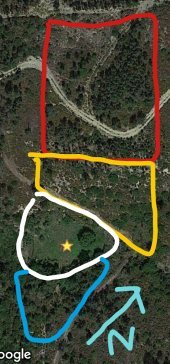
 1
1




 2
2




 3
3




"When the whole world is running towards a cliff, he who is running in the opposite direction appears to have lost his mind." C.S. Lewis
Visit https://themaineingredient.com for organic, premium dried culinary herbs that are grown, processed, and packaged in the USA.
 1
1




 3
3








"When the whole world is running towards a cliff, he who is running in the opposite direction appears to have lost his mind." C.S. Lewis
Visit https://themaineingredient.com for organic, premium dried culinary herbs that are grown, processed, and packaged in the USA.
 1
1




This is all just my opinion based on a flawed memory

 2
2




the wind can come down the slope fairly strongly at times
sow…reap…compost…repeat




"When the whole world is running towards a cliff, he who is running in the opposite direction appears to have lost his mind." C.S. Lewis
Visit https://themaineingredient.com for organic, premium dried culinary herbs that are grown, processed, and packaged in the USA.
 2
2




This is all just my opinion based on a flawed memory

 1
1




 1
1




Amy Gardener wrote:
In trying to get a mental image of the situation, I am struggling a bit.
Thanks for trying to understand my situation...
Sorry my description wasn't very accurate...maybe this image will help!
It's a very gentle slope where the veg garden will be, where I was thinking of putting some windbreak plants in is SE not directly E. The top of the hill 130m or so beyond there blocks the early early morning sun, but still even in winter the garden gets sun from roughly 8.30am till 4pm. The wind is actually more often from the West, but we have the occasionally strong easterly, sometimes with rainstorms.
I don't really need trees there and I think I have decided now not to bother putting any trees in that space, as a windbreak. I have planted a few fruit trees along the southern side of the veg garden & will be looking at what nitrogen fixers are appropriate for in between those....can't find false indigo in Aus, I have some pigeon pea seeds, tagasastes I grew probably a couple of years ago & are itching to get out of their pots, and I could get some Australian indigos, though I am unsure exactly how high their N fixing capabilities are....but there is not much wind from that direction because of the native bushland not far away so I don't Need to grow tall plants there.
For the SE side of the garden I'm now considering using the space for a post & wire setup with kiwifruit & passionfruit & chinese yam. Kiwis should provide a fair amount of wind protection once they grow up, though I don't know how long they take to grow. While I wasn't originally intending to plant beyond the fenced garden area at this stage, I think it is probably best to grow some coppiced trees on the boundary fenceline so it's further away from the garden...
![Filename: Map_back_veg_gdn.jpg
Description: [Thumbnail for Map_back_veg_gdn.jpg]](/t/190119/a/187762/Map_back_veg_gdn.jpg)
 1
1





|
It is an experimental device that will make my mind that most powerful force on earth! More powerful than this tiny ad!
The new purple deck of permaculture playing cards
https://www.kickstarter.com/projects/paulwheaton/garden-cards
|





